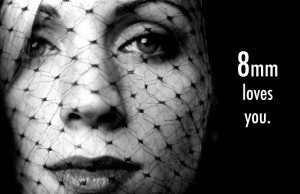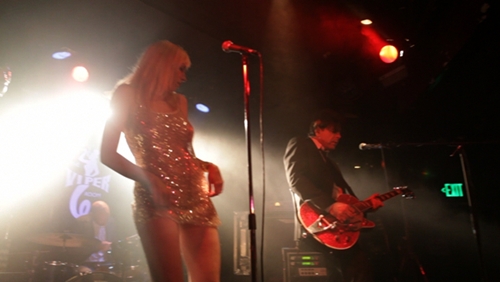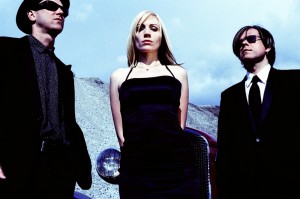FNB: Any femmes fatales that stand out for you?
JB: Hahaha, are you gonna ask any questions with short answers? Where to start … Marlene Dietrich, Bette Davis, Marilyn Monroe, Gene Tierney, Lauren Bacall, Joan Crawford, Anne Baxter, Nora Zehetner in “Brick” does a wonderful job, not to mention (I know they’re not femmes fatales, but I would be remiss to leave the men out) Joseph Gordon-Levitt gives Bogey a run for his money in that film. And for the men, of course, there is the one and only Humphrey Bogart.
FNB: Of ’40s and ’50s singers or bands, who are your top favorites?
JB: Nat King Cole, Frank Sinatra, Billie Holiday, Edith Piaf, Bing Crosby, to name a few.
FNB: Do you essentially get into character when you perform, especially Juliette as the frontwoman?
JB: In a sense, yes, and it varies from song to song, because each one is a different story, character, sort of mini movie for us. I’m a storyteller not a character (like a GaGa or Madonna), so the approach is a little different. It only takes a note or two for me “see it” in my head again, to step into “her” shoes … from there it’s just natural.
You kind of have to use your whole body to tell the story, and the story becomes my own for that time.
FNB: Raymond Chandler said a good story cannot be devised; it has to be distilled. Do you think that’s true for writing songs and music?
JB: Certainly at times … what Sean plays makes me see stories, so I suppose you could say that is a bit of a distilling process to bring the story down into its key emotional components for a 3 minute song. However, there are other times when you get a “cosmic FedEx” (a term we’re stealing from Scott Russo of Unwritten Law). That’s where the song comes to you almost writing itself and you have to grab and get it down before it moves on. You know, the muse will find another host if you aren’t paying attention.
JB: The biggest misconception is that everyone is shallow and back-stabbing here. It’s simply not true. Sure, there are jackasses here, but they are everywhere. Every place has ’em. The population is so large in LA that one could think there are more of the bad guys here, but that’s a ratio thing.
![roxyposter1-300[1]](http://www.filmnoirblonde.com/wp-content/uploads/2011/05/roxyposter1-30011-193x300.jpg) FNB: You were both living in New Orleans when you got together. How did you meet?
FNB: You were both living in New Orleans when you got together. How did you meet?JB: We were in Jimmy’s in New Orleans. Sean was mixing front of house for Nine Inch Nails. It was a surprise show in a small club so it was packed to the rafters and complete chaos. We actually just saw each other that night. We didn’t exchange anything more than looks, really. We tried, but between the show and the crowd, we kept getting pushed apart. At the end of the night we saw each other across the room and kind of shrugged, an “oh well” and that was it. Not a word.
JB: Load in and load out. The rest is fun!
JB: Definitely. Stop Staring! clothing line by Alicia Estrada. The line is all inspired by golden-era Hollywood, subtly blending elements of ’40s, ’50s and early ’60s. Most of what I wear on stage is Stop Staring!













From FNB readers